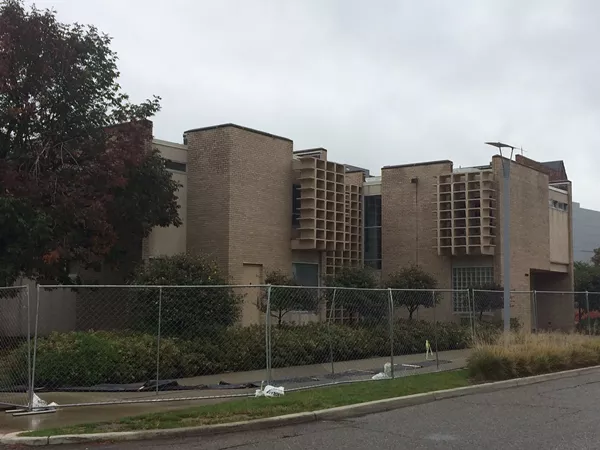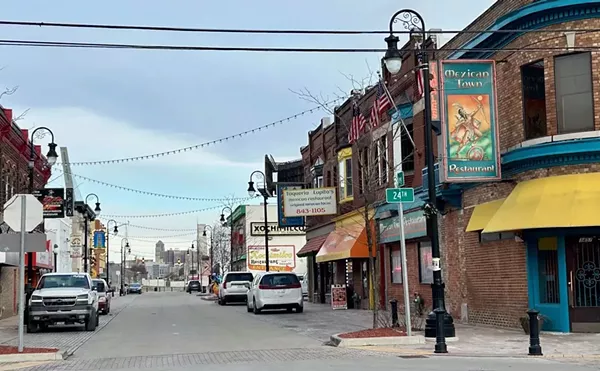
Audio By Carbonatix
[
{
"name": "GPT - Leaderboard - Inline - Content",
"component": "35519556",
"insertPoint": "5th",
"startingPoint": "3",
"requiredCountToDisplay": "3",
"maxInsertions": 100,
"adList": [
{
"adPreset": "LeaderboardInline"
}
]
}
]
A unique midcentury modern building purchased by the Detroit Institute of Arts last year will be razed in the coming weeks to make way for a parking lot. A DIA spokeswoman confirmed on Friday that demolition of Barat House on 5250 John R. Street is currently underway.
Originally constructed by the League of Catholic Women as an psychiatric facility for teenage girls in 1961, the building was designed by Robert Harter Snyder, an architect who worked for Albert Kahn's firm and was later a protege of Cranbrook Academy of Art's Eliel Saarinen.
Yet despite the building's architectural significance, it will be demolished by the art museum. "As part of the due diligence conducted in connection with acquiring Barat House, the DIA found no evidence or basis to assert that any legal historic designations or historic restrictions applied to the property," the DIA spokeswoman says in an email to Metro Times. "The city has approved the plans to demolish the building, and the DIA met with the president of Preservation Detroit to let them know of our plans and gave them the opportunity to examine the building’s exterior to determine if there were any materials they wanted to salvage."
The DIA spokeswoman says the parking lot would serve not just the art museum but also alleviate the need for parking for the Science Center, the Charles H. Wright Museum, Detroit Public Library, and the Detroit Historical Museum. The tentative plan is to use the space temporarily as a surface lot, as the underground garage on Farnsworth is currently out of use due to needed structural upgrades.
"We envision a plan that supports the 'town square' concept, in which we can have sufficient visitor parking on John R while also creating a pedestrian-friendly public space that better connects the DIA with the Science Center, the Charles H. Wright Museum of African American History, and CCS," the spokeswoman says.
Barat House is an experimental, one-of-a-kind example of Detroit's legacy of midcentury modern architecture, notable for its honeycomb-like concrete grids over the windows in the place of iron bars. A eulogy written for the Detroit Urbanism blog takes a look at the building's past along with other work of architect Snyder.
As the Detroit Free Press reported in 1960, Snyder said his plan was to create "an environment that would improve the emotional stability of the girls. We had no real precedent to follow, for little has been done in the field of mental health architecture. We sought to develop a spirit of containment without restraint."
The DIA spokeswoman says the demolition process is in progress and will take approximately two weeks.







